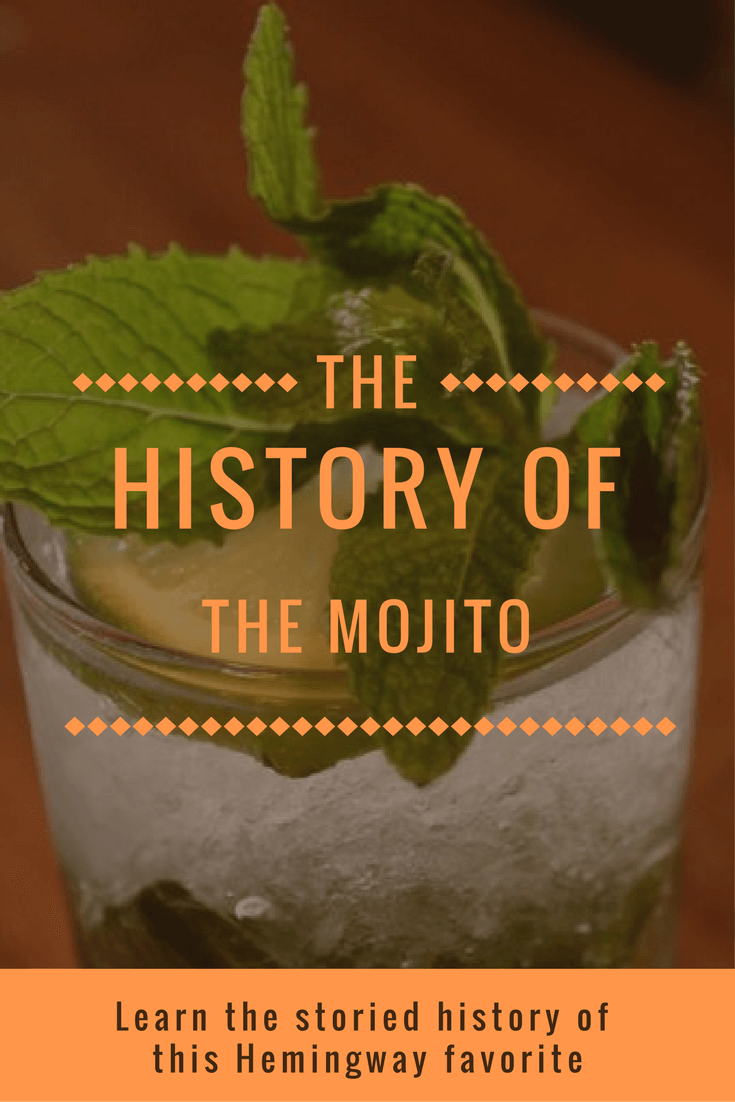This post is part of our Rum Hub.
Given that its name derives from mojo, an African word meaning to cast a spell, it’s not surprising that there’s something a little bit magical about the Mojito. And sure, we know that the name probably actually comes from the family of Caribbean spices and marinades, or the word mojado, meaning “wet,” but let us have our fun. It’s not a complicated drink—some of our compatriots might even dismiss it as an “entry-level” cocktail—but its combination of rum, lime, mint, and sugar is so natural that it seems almost obvious. How could they not go together?
Despite its simple recipe, the history of the Mojito is as fascinating as it is controversial. From its humble origins in the sugarcane fields of Cuba, it went on to travel the world as a favorite of celebrities, dignitaries, and tourists alike. Now, it’s hard to imagine summertime anywhere without this classic drink. Now, let’s dive into the Mojito’s storied past.
El Draque
Sir Francis Drake—sea captain, privateer, navigator, and global circumnavigator—won renown in the Elizabethan era for his daring exploits. He wasn’t a great guy, what with the slave-trading, massacring of Irish civilians, and his habit of executing people who disagreed with him, but for better or worse (mostly worse), he remains a household name to this day.
In the nineteenth-century Caribbean, more than 200 years after Drake made his last voyage to the region, we find the first mention of his name associated with the drink that would become the Mojito: El Draque. It appears in Cuban author Ramón de Palma’s 1833 story El Colera en la Habana as “el Draquecito,” a popular nickname for the simple mixture of rum, sugar, lime, and mint that was a favorite among laborers.
There’s no indication that Drake would have ever actually consumed this particular cocktail, but it’s not impossible to imagine that he might have had something similar. Early incarnations of rum were harsh, frequently unaged and generally somewhat unpalatable. Softening it up with some citrus and sugar, both of which were abundant in the Caribbean, seems like a pretty logical conclusion for any determined drinker.
Prohibition
Over time, the Draque was tweaked, refined, and otherwise messed-with until it ended up more or less like the Mojito we know and love today: white rum, sugar, lime, mint, ice, and soda water in a highball glass. The earliest mention of the complete recipe doesn’t show up until 1931, but we can be pretty sure that it was around well before that. Unlike today, it used to take a many years, sometimes even decades, for a cocktail recipe to be published for posterity after it was first concocted.
When Prohibition went into effect, Cuba became the place for American tourists to go if they wanted a good drink. It was nearby, the weather was beautiful, and there was legal rum aplenty. It was likely during this time, when Havana bars like Sloppy Joe’s and La Bodeguita del Medio were flooded with business from the north, that the Mojito found its place in the American drinking vernacular.

Hemingway
One of the more popular facts (or myths, depending on who you ask) about the Mojito concerns legendary American author Ernest Hemingway. While the man is certainly most famous for his novels and short stories, most of us also know him as an accomplished—and profoundly excessive—drinker. Stories abound of his drunken exploits, and the fact that his travels took him all over the world meant that he frequently had the chance to sample exotic spirits and cocktails.
Chief among his favorite tipples was, supposedly, the Mojito. Hemingway apparently knocked them back by the dozen at La Bodueguita del Medio, and seems to have played a fairly significant role in popularizing the drink here in the States. The phrase “My mojito in La Bodeguita, my daiquiri in El Floridita,” apparently from Hemingway himself, is even immortalized above the bar.
Hemingway historians, though, dispute the fact that he was ever a regular at La Bodeguita. Though the bar claims to have invented the Mojito (a dubious proposition, given that they only opened in 1942), it seems that the place is much better known for its food than for its cocktails. Papa certainly spent a lot of his free time in Havana, but chances are it was at a different location. And, to put a further damper on things, it seems that the experts don’t think the Mojito ever held much of a special place in the man’s heart. If it had booze in it, he didn’t much mind what else was in the glass.
Regardless of who invented it, or who popularized it, or what it’s named after, though, the Mojito is indisputably one of the most popular cocktails in the world today. It occupies a strange middle ground in cocktail culture, somewhere between the everyday drinkers and the highfalutin’ mixologist types, that few recipes can manage. Simple, classic, and endlessly refreshing on the beach or at a barbecue, the Mojito is clearly here to stay.
This article is part of a series on the Mojito. Check out our pieces on How to Make a Mojito and 5 Mojito Variations.
Photo: Ernest Hemingway in Pamplona drinking, as usual, just about everything in sight.
Return to the Rum Hub.






2 Comments